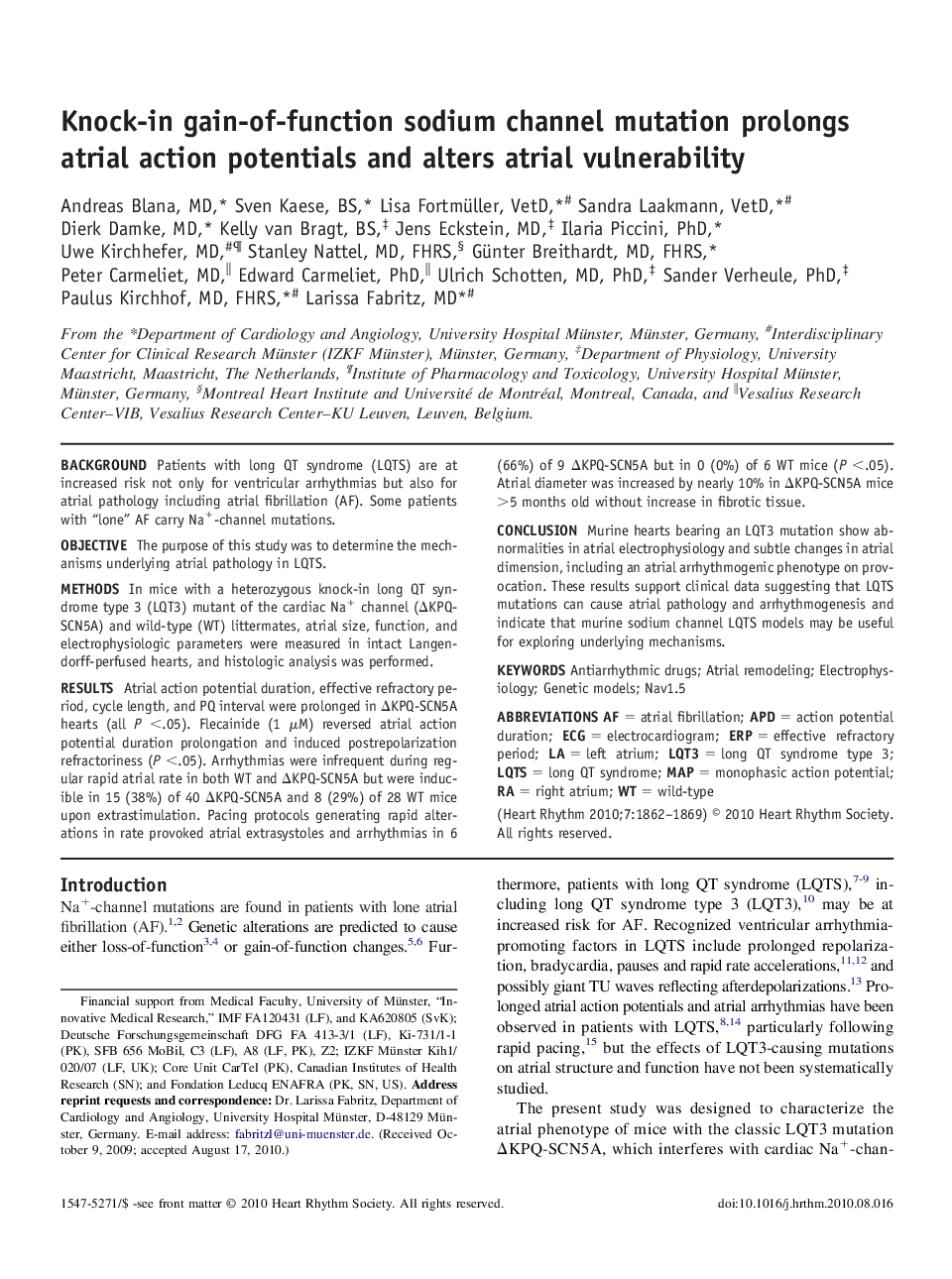| کد مقاله | کد نشریه | سال انتشار | مقاله انگلیسی | نسخه تمام متن |
|---|---|---|---|---|
| 2923183 | 1175865 | 2010 | 8 صفحه PDF | دانلود رایگان |

BackgroundPatients with long QT syndrome (LQTS) are at increased risk not only for ventricular arrhythmias but also for atrial pathology including atrial fibrillation (AF). Some patients with “lone” AF carry Na+-channel mutations.ObjectiveThe purpose of this study was to determine the mechanisms underlying atrial pathology in LQTS.MethodsIn mice with a heterozygous knock-in long QT syndrome type 3 (LQT3) mutant of the cardiac Na+ channel (ΔKPQ-SCN5A) and wild-type (WT) littermates, atrial size, function, and electrophysiologic parameters were measured in intact Langendorff-perfused hearts, and histologic analysis was performed.ResultsAtrial action potential duration, effective refractory period, cycle length, and PQ interval were prolonged in ΔKPQ-SCN5A hearts (all P <.05). Flecainide (1 μM) reversed atrial action potential duration prolongation and induced postrepolarization refractoriness (P <.05). Arrhythmias were infrequent during regular rapid atrial rate in both WT and ΔKPQ-SCN5A but were inducible in 15 (38%) of 40 ΔKPQ-SCN5A and 8 (29%) of 28 WT mice upon extrastimulation. Pacing protocols generating rapid alterations in rate provoked atrial extrasystoles and arrhythmias in 6 (66%) of 9 ΔKPQ-SCN5A but in 0 (0%) of 6 WT mice (P <.05). Atrial diameter was increased by nearly 10% in ΔKPQ-SCN5A mice >5 months old without increase in fibrotic tissue.ConclusionMurine hearts bearing an LQT3 mutation show abnormalities in atrial electrophysiology and subtle changes in atrial dimension, including an atrial arrhythmogenic phenotype on provocation. These results support clinical data suggesting that LQTS mutations can cause atrial pathology and arrhythmogenesis and indicate that murine sodium channel LQTS models may be useful for exploring underlying mechanisms.
Journal: Heart Rhythm - Volume 7, Issue 12, December 2010, Pages 1862–1869